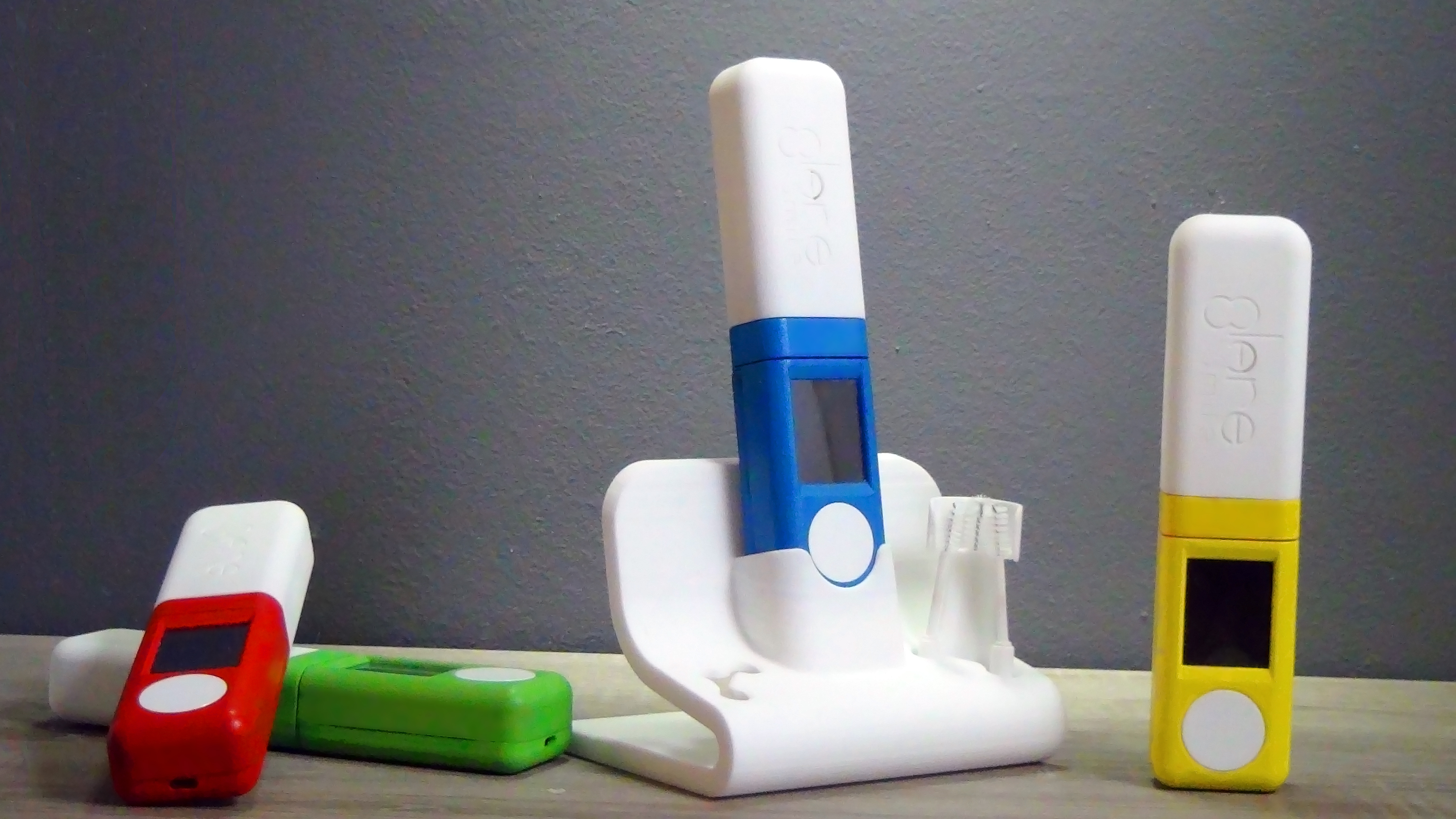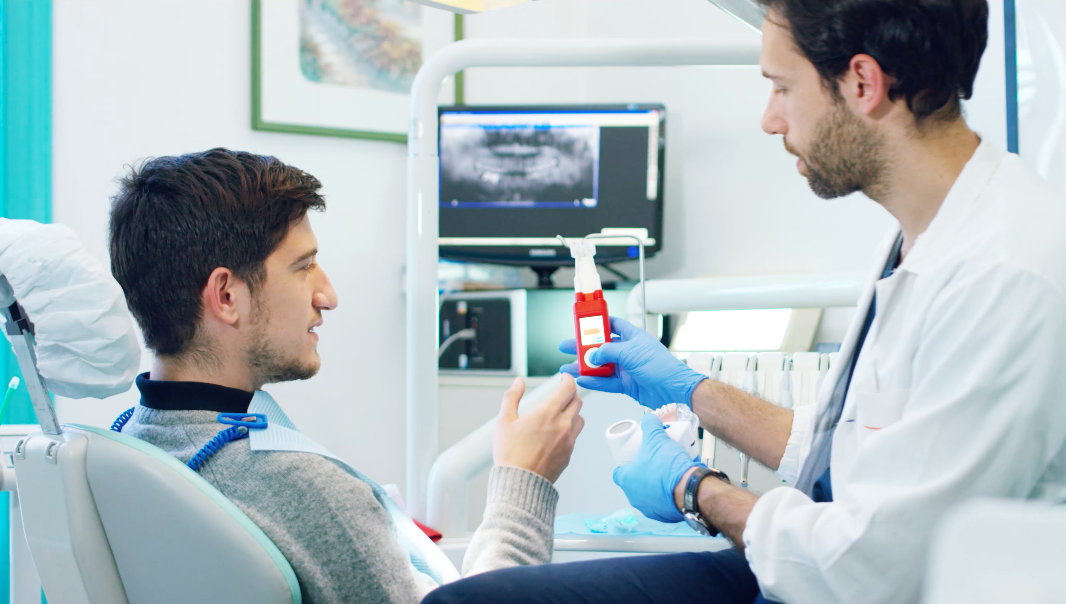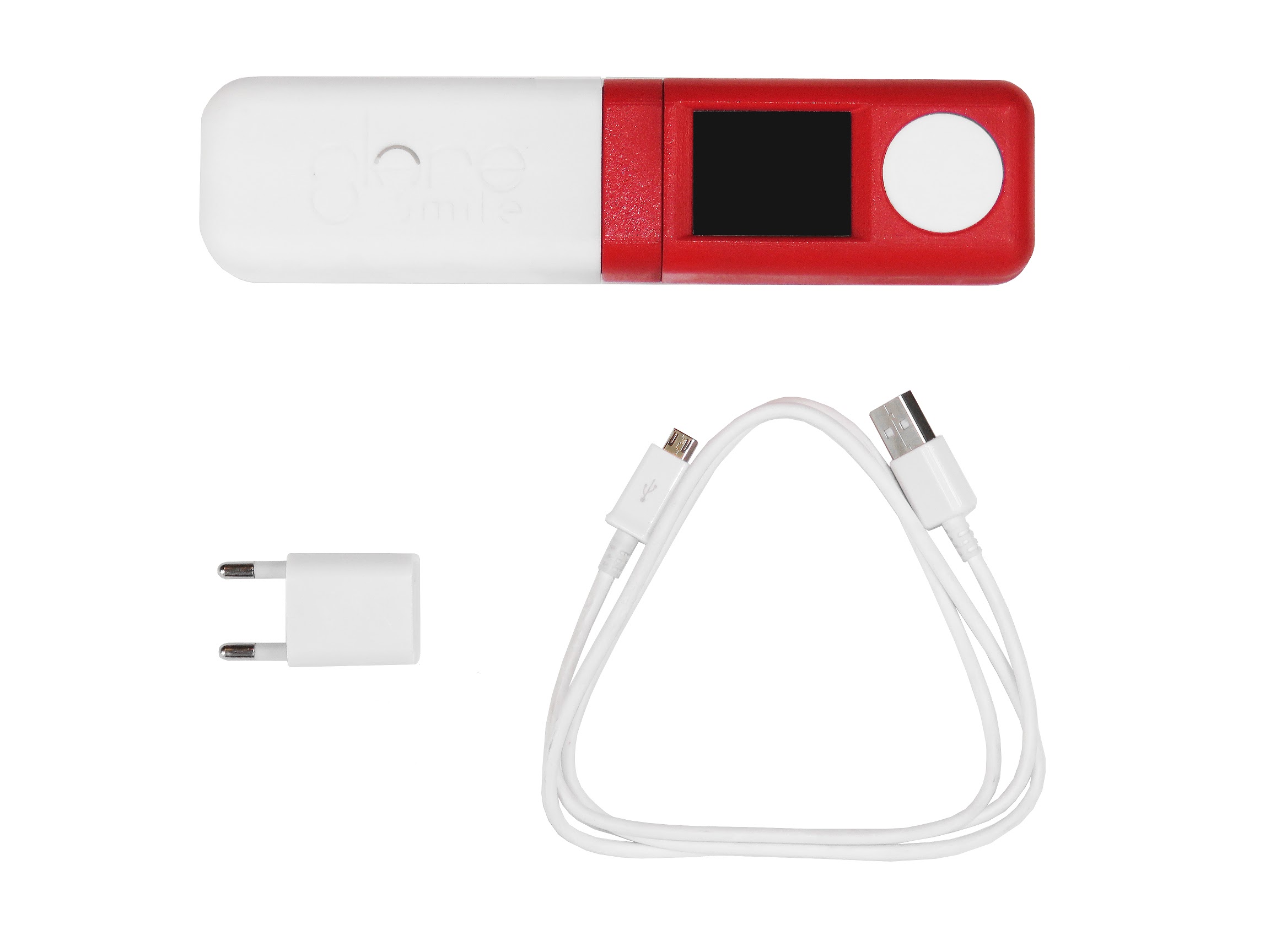“All regular manual or electric toothbrushes have a common problem: they are totally dependent on the ability of the user to use them properly,” Dominici tells Digital Trends. “This ability may be affected by lack of knowledge of the correct brushing technique, lack of manual ability to perform the right motion, or lack of time to dedicate the necessary two minutes. In fact, statistics show that nearly 70% of the population does not brush the right way, so we believed it was necessary to introduce a new device, capable of making toothbrushing independent of human skills.”
Unlike your regular boring toothbrush, GlareSmile has three rotating brushes that allow it to clean every dental surface at the same time; brushing teeth simultaneously with oscillation and rotation motions. The two outer brushes respectively brush the vestibular and lingual/palatal surfaces of each tooth, while the central brush cleans the occlusal surfaces. The easily-guided rotation movement from bottom to top reportedly removes plaque in the same way a manual or standard electric toothbrush would — but in a toothpaste-spitting 2.5 seconds per quadrant of your mouth.
Dominici says that “nothing like this exists” elsewhere, and he and Cerizza are currently in the middle of a Kickstarter campaign, looking to raise a total of €50,000 ($56,000). The GlareSmile brush will eventually set customers back €150, but early bird backers can get their hands on it (complete with USB cable) for €99 ($112).
Now that’s something worth grinning about!







